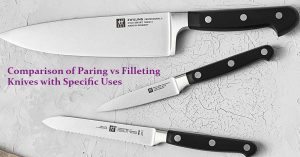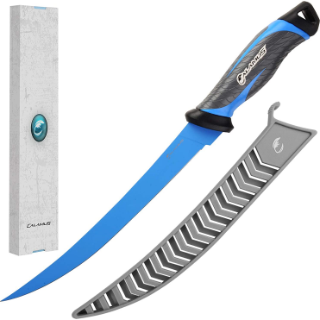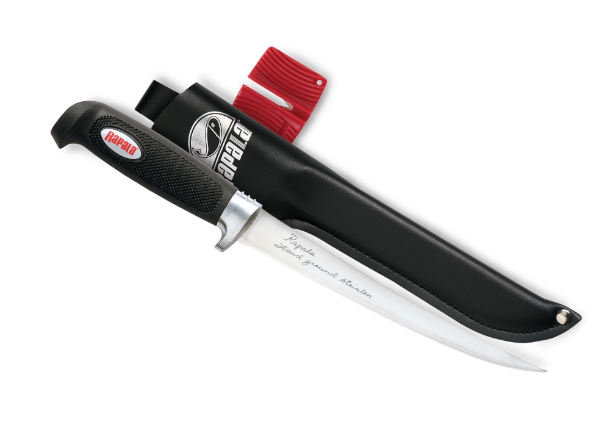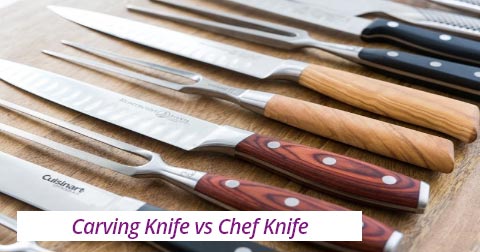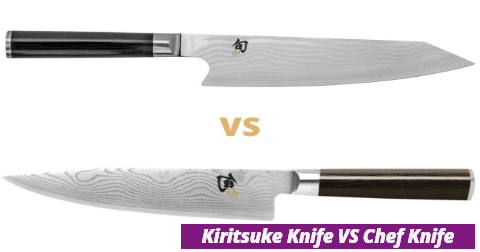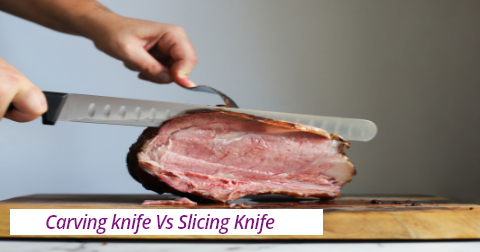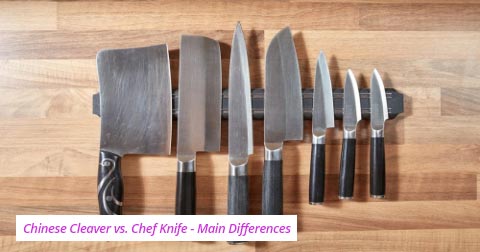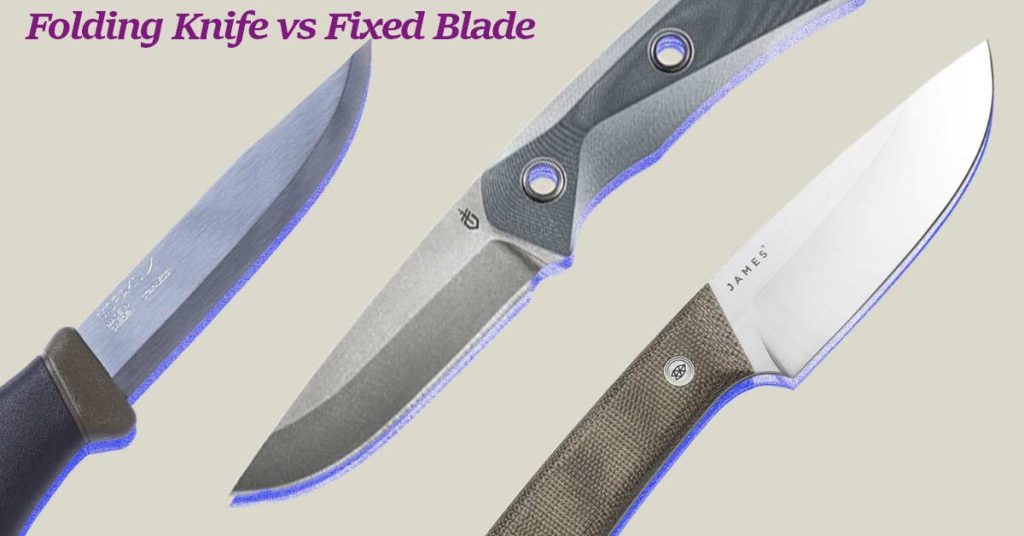As we all know there are many types of knives in the world and each one is made to do something special and that is what becomes its identity. The proportion of people who know each type of knife and its speciality is very low, So a common man needs to know about them so that he can choose the best knife according to his need.
Here we present the key differences between paring and fillet knives, their features, performance, drawbacks, uses, and more. Let’s take a look at their features and properties, how their blades, material, handles are useful to us.
Fillet Knife
Fillet knives with 5 to 11 inch size flexible and sharp blades are known for quick removal of fish flesh from bones. Their blades are curved and have a tip that is useful for starting cuts on the fish and the curved blades create flexibility so that the knife can easily rotate around the bones to completely remove the skin.
Types Of Fillet Knives
Electric and manual are the types of fillet knives that have their pros and cons.
Electric Fillet knife: : Electric Knife works with a motor that requires a powerful electric source to activate the knife. It works faster but requires a professional and experienced chef to make the precise cuts because it is difficult to control and if you are using it for the first time there is a risk of damage to the fish.
Electric knives are further divided into two kinds including cordless electric and corded electric knives. If you choose a knife with a cord, you need to be careful about its size, which should be long enough to plug anywhere without any hassle.
Manual Knife: Manual knives are easier to control than electric ones, its ability to work depends on the user’s strength and cutting skills as it provides complete control for custom cutting.
What is a Fillet Knife Used for?
Fillet knives are not as standard as kitchen knives, which are used to make fish fillets, and its blades are known for removing bones from the skin.
If you are a professional and very skilled in this job, its sharp blades enable you to cut fish and make fillets in a matter of seconds.
A fillet knife is mainly designed for fillet a fish and removing their flesh from the bones in the kitchen. It comes with a thin profile and uses a trailing point with trailing that is bent upward.
With the passage of time many western fillet knives lose these upward curves but the best Japanese fillet knives still contain this feature.
The thin profile of fillet knife and their unique blade design enable the users for precise cutting of fish body and it is also used for skinning.
The blade is made of stainless steel which is resistant to corrosion which keeps it smooth and gives good results even in wet environments.
This steel never needs to be sharpened frequently, its corrosion resistance is sufficient to maintain it. The size of the blade is very important for the fish fillet, it is between 6 and 11 inches in size which is very good for working easily on any size fish.
More guidance regarding the best fillet knife and best electric fillet knife for fish are below. You should study it for further knowledge.
Uses of the Fillet Knife in the Kitchen
Here we will talk about other things that we can do with a fillet knife in the kitchen, besides filleting the fish which is its specialty.
Cutting Chicken:
A fillet knife allows you to make chicken slices, you can easily remove the excess fat with this knife and get thin slices, when your standard kitchen knife fails to cut into large pieces, It works well.
Decorating Vegetables:
At your largest family dinner, a fillet knife helps you make quick and well-designed salads and saves time. Your presentation will make you an expert chef in front of relatives in which the fillet knife will play a significant role.
Fish Cleaning:
Are you wondering how a fillet knife can help clean fish? While we can do it with water or alcohol or any other bactericide, Yes the fact is that a fillet knife is helpful to clean the fish as you need to remove the intestines and throat of the fish which can be easily done with it.
Meat slicing:
Like other stuff you can use an electric fillet knife for accurate slicing of meat, you don’t need to get a meat slicer. You can also use a manual fillet knife but it will take a little bit more time as compared to an electric fillet knife.
Preparing fruits:
Along with vegetables you can also use it to cut fruits, it will give you better results than any ordinary knife. A fillet knife is also great when you need to crust your fruits from avocado, beetroot and potatoes. It ensures you only remove the skins without wasting the meat. They also come in handy when you’re pitting and preparing fruits and vegetables for salads.
Paring Knife:
Paring Knife is a necessity and adornment of every kitchen, with its small size blades capable of meeting all kinds of needs. It usually comes with a 3.5-inch blade that is small in size but performs big tasks efficiently. Now let’s see how its small size can be useful for us.
Multipurpose Fillet Knife:
The fillet knife’s blades are specifically used for cutting various types of fishes but it can also be used for filleting poultry products and making thin slices of meat. The manual fillet knives and electric fillet knives are efficiently used by experienced chefs and professional seafood preparers.
Tips for cutting fish :
Fillet knives must be used for making precise cuts of fishes. It is long, thin and flexible and has sturdy blades which provide easy cutting of fishes. In the following section I am providing some tips for using a fillet knife in two sections.
Section 1 :
- Descale the fish by back of the blade
- Remove the fins and skin
- Now remove the entrails and rinse with fresh water
Section 2 :
- Cut the fishes lengthwise or widely
- Make the cuts on each side in order to define them
- Now remove the fillet from spine using your blade
- Repeat the same process with your fillet knife on the opposite side of fish
Note :
It is important to note that this cutting technique can be used on almost all types of fish.
What is a Paring Knife Used for?
Here are some uses of a paring knife:
Now this paragraph will give you justification of the benefits of its size. Due to its small size it does not weigh much which allows the user to use it for more work with full control. You can get clean and precise cuts as needed to make your food delicious.
It is characterized by peeling off regularly used items, including skins, fruits (Strawberries), salad and a variety of vegetables like onions, tomatoes, and peppers. It will provide better cutting results than other knives, because of this feature it is also known as a peeling knife.
Paring vs Filleting Knives Features
To distinguish between the two knives, we present a comparison chart showing the characteristics of a fillet and paring knife, from which you will learn which one is better and more useful for you.
| Features | Paring | Fillet |
| Length | 2-5 inches | 6-11 inches |
| Edge | Serrated | Straight |
| Blade material | Stainless steel | Stainless steel |
| Construction | Hand-forged or Stamped | Hand-forged |
| Bevel | Double | Double |
Standout Features Between Paring Vs. Filleting Knives
As you may have noticed, Paring and Fillet knives somehow have the same features, but at the same time there are some differences. Here are a few:
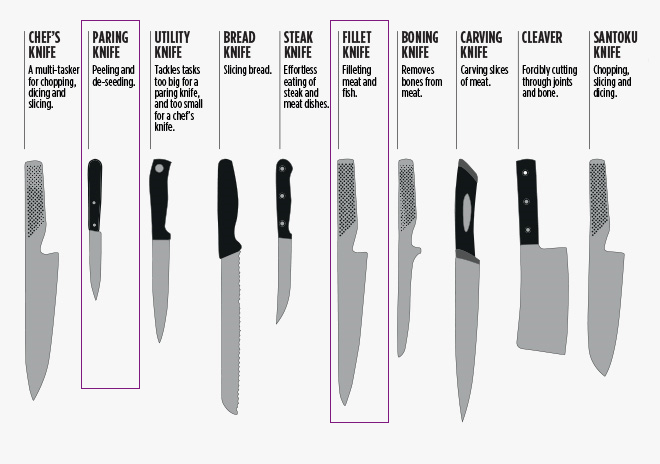
Slicing:
Both knives can be used for slicing but Don’t expect the same results from both, the fact is that you will cut many times cleaner and better with a fillet knife.
Flexibility:
In peeling and cutting fruits and vegetables, a paring knife is considered king because of its small size and flexibility, and fillet knife is three times its size, obviously it is not easy to move.
Precision Work:
The fillet Knife has some extra qualities that set it apart from the paring knife, as its sharp tip allows users to cut more accurately than any knife, so especially at this point there is no comparison between them.
Conclusion
After taking a look at both of their features, we are able to conclude that the main difference is in the size of the blade, the fillet knife is about 9 inches in size and the paring knife is 3.5 inches. The size makes a difference in the quality of the work, the smaller size gives the paring knife more flexibility which is its plus point, and with the pointed tip, a fillet knife gets a higher score.
Both knives are good in their own way, so the only thing that can decide which is best for you is what you need, what size blade will meet your needs.
Recommended for you

